Estimated Reading Time: 10 minutes
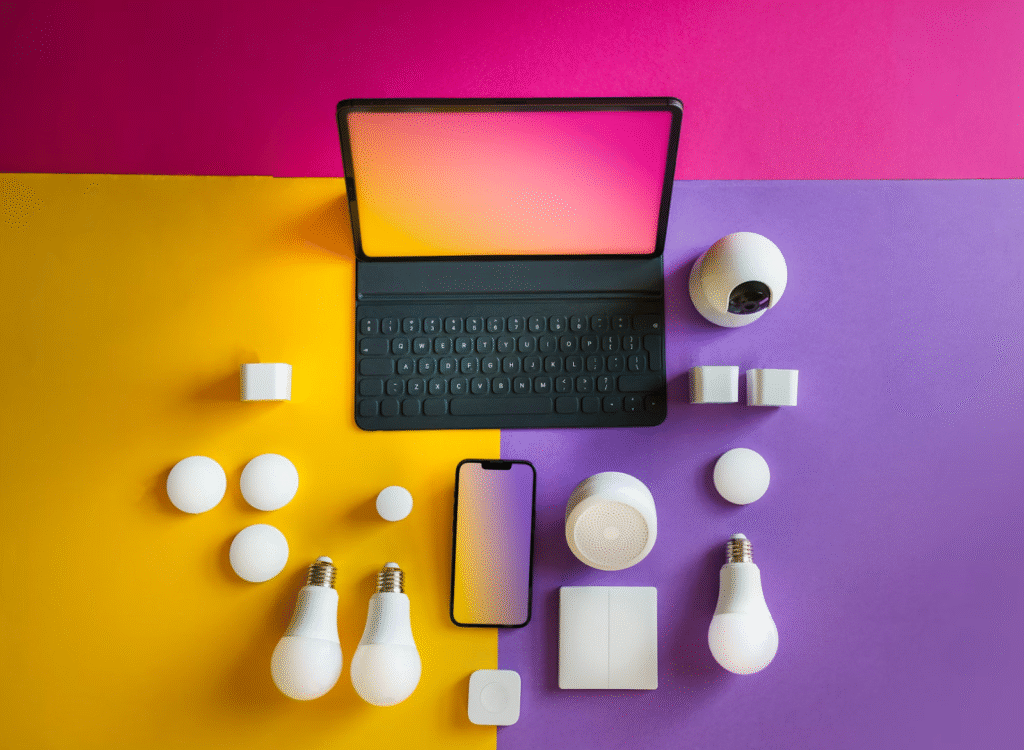
Customer loyalty isn’t built on points anymore.
It’s engineered through omnichannel loyalty.
Today’s customers move fluidly across apps, stores, and screens — and they expect brands to follow seamlessly. That’s where omnichannel technology comes in. The world’s best brands no longer treat loyalty as a campaign, but as an ecosystem you architect: one where data, personalization, and connection merge to create a truly omnichannel customer experience.
Modern omnichannel loyalty programs make that possible. Backed by advanced loyalty technology and a unified omnichannel loyalty platform, they turn scattered touchpoints into a single, connected journey.
In 2025, loyalty isn’t about transactions. It’s about trust and the tech stack that powers it.
Let’s explore how to build that foundation.
Why Omnichannel Loyalty Needs the Right Tech Stack
Customer expectations in 2025
In 2025, your customers don’t just buy… they orbit. They might discover your brand on Instagram, browse reviews on their tablet, and finally make the purchase in-store. All within a few hours.
To them, that’s one seamless experience.
To your systems? It’s usually chaos.
Omnichannel loyalty bridges that chaos. It’s not about being everywhere; it’s about being connected everywhere. Customers no longer care which platform they’re on. They care that you remember who they are, what they like, and where they left off.
And that’s only possible with the right technology stack. One that talks to itself as well as it talks to your customers. Platforms like SimpleLoyalty are built with this philosophy at the core, connecting every touchpoint into one frictionless experience.
Why disconnected systems kill loyalty
A fragmented system is like an orchestra without a conductor. Everyone’s playing beautifully, but no one’s playing together.
Your CRM (customer relationship management), POS (point of sale), and e-commerce might all play their parts, but without synchronization, it’s noise.
When loyalty data doesn’t flow between platforms, customers notice. Points don’t update. Rewards go missing. Personalization fails. The result? Frustration and eventually, defection.
The right omnichannel tech stack prevents that by connecting every channel, data stream, and interaction into one intelligent network. It’s how brands like Starbucks, Sephora, and Nike turn convenience into commitment.
Data and automation
Behind every “Welcome back, Joe!” notification or “You’re 20 points away from a reward” email lies an engine of data and automation. They’re the backbone of omnichannel success.
Automation ensures your brand is present at the right time; data ensures it says the right thing. Combine both, they can transform loyalty from a transaction-based system into an emotional feedback loop.
Customers give data, and in return, receive relevance.
How data and automation power loyalty:
Purchase → data capture → personalization → automation → engagement → repeat
Core Components of an Omnichannel Loyalty Tech stack
Unifies POS + Loyalty System
Your POS is where data begins.
When your loyalty platform integrates directly with your POS, every purchase, reward, and redemption updates in real time. No more “I thought I had enough points” moments.
A unified POS-loyalty setup is your operational heartbeat. It ensures both your staff and your customers instantly see the same information. SimpleLoyalty integrates with leading POS systems to make this process seamless, giving both small retailers and enterprise brands an accurate view of every transaction.
Customer Data Platform / CRM
Think of this as your brand’s memory. A CRM or CDP collects behavioral and transactional data across every touchpoint, building a single source of truth for each customer.
This is where personalization lives — from knowing what a customer last purchased to predicting what they’ll love next. Without it, every campaign is a blindfolded dart throw.
Marketing Automation & Personalization Tools
Omnichannel loyalty thrives on timing. Marketing automation platforms ensure your messages are both contextual and consistent (whether through email, SMS, or in-app notifications).
The magic lies in behavior-based triggers. Those subtle nudges that remind customers they’re seen, valued, and rewarded.
Mobile Wallet Pass or Loyalty App
Physical cards are relics. Mobile wallet passes and branded loyalty apps let customers earn, track, and redeem on the go. No downloads, no friction.
More importantly, these platforms let you engage users post-purchase with tailored offers and real-time updates, strengthening brand recall.
Ecommerce & In-Store Sync
Loyalty shouldn’t vanish at the checkout line. A modern stack ensures that online and offline purchases contribute to the same rewards ecosystem. When customers feel recognized regardless of where they buy, they stay.
Secure Database
The unglamorous yet essential backbone of your omnichannel technology stack. Scalability ensures you grow without collapsing under your own data. Security ensures your customers keep trusting you with it.
The Best Tools for a Modern Omnichannel Loyalty Stack
A tech stack is only as good as the connection it makes. In omnichannel loyalty, this means uniting POS, CRM, automation, mobile, and data platforms into a single, harmonious ecosystem.
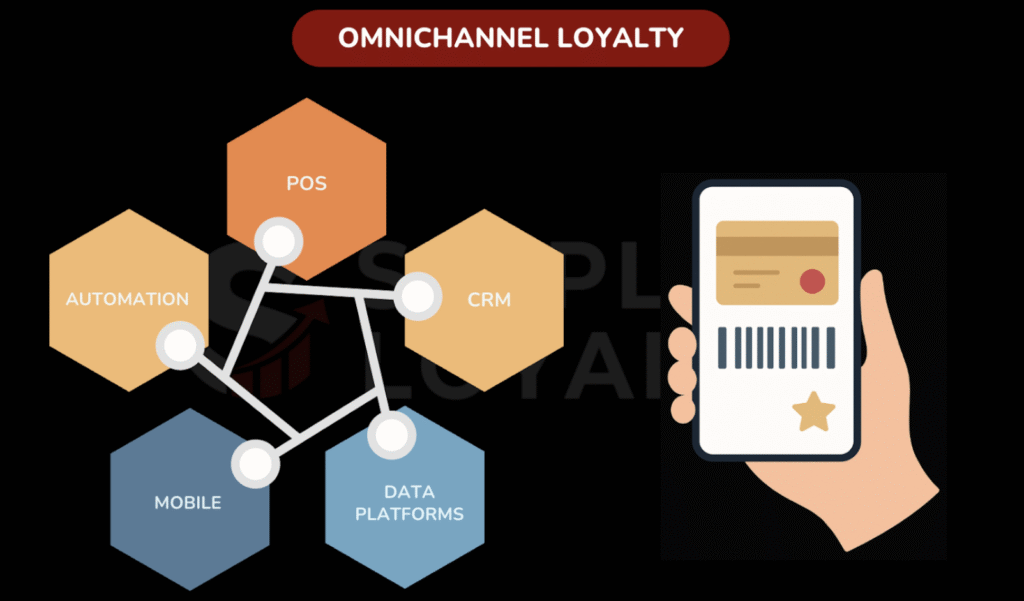
These tools form the backbone of any modern omnichannel loyalty program. But how you combine them depends on your business size, complexity, and customer touchpoints. Below is a practical blueprint showing how small retailers and multi-location restaurants can structure their tech stack to maximize efficiency and customer experience.
Here’s how the best tools do it (and why SimpleLoyalty often sits at the center of the orchestra):
Loyalty Platforms
Your loyalty platform is the engine of engagement. This is where tiered programs, gamified campaigns, cross-channel earning rules, and rewards tracking come together. Brands that leverage a strong platform turn ordinary transactions into meaningful interactions.
A robust loyalty program centralizes points, automations, and customer insights, ensuring marketing campaigns remain consistent and customers are recognized across all touchpoints. The choice of platform may vary depending on business size and needs.
SimpleLoyalty excels here by centralizing every touchpoint (in-store, online, and mobile) under one dashboard. It allows retailers and restaurants to orchestrate loyalty programs that are flexible, scalable, and intelligent, so your customer experience feels seamless and personal no matter where it happens.

Other examples:

POS Systems with Loyalty Integration
Your POS is more than a checkout tool. It’s the point where loyalty data first comes alive. Every purchase should feed your loyalty program in real time, across all channels. Without this, rewards, points, and personalization lag behind customer expectations, breaking trust before it can be built.
If you don’t think POS systems are necessary, think again. They ensure every transaction contributes to accurate rewards, customer profiles, and unified data. The real-time syncing is what allows loyalty programs to function seamlessly across all channels.
SimpleLoyalty integrates seamlessly with leading POS systems, ensuring every coffee bought, every item scanned, and every purchase made counts immediately toward a customer’s loyalty journey. This integration removes friction for both staff and customers, making the system feel invisible yet incredibly powerful.
Other examples:
Square, Shopify POS, Lightspeed

CRM Solutions
Your CRM is where your brand learns who your customers are and what they want. Paired with your loyalty platform, it transforms transactional data into actionable insights — predicting trends, segmenting audiences, and guiding personalization.
When integrated with SimpleLoyalty, your CRM doesn’t just store data; it activates it. Personalized campaigns, targeted promotions, and behavior-based triggers ensure customers feel seen and rewarded for the right actions, fostering trust and repeat visits.
Other examples:
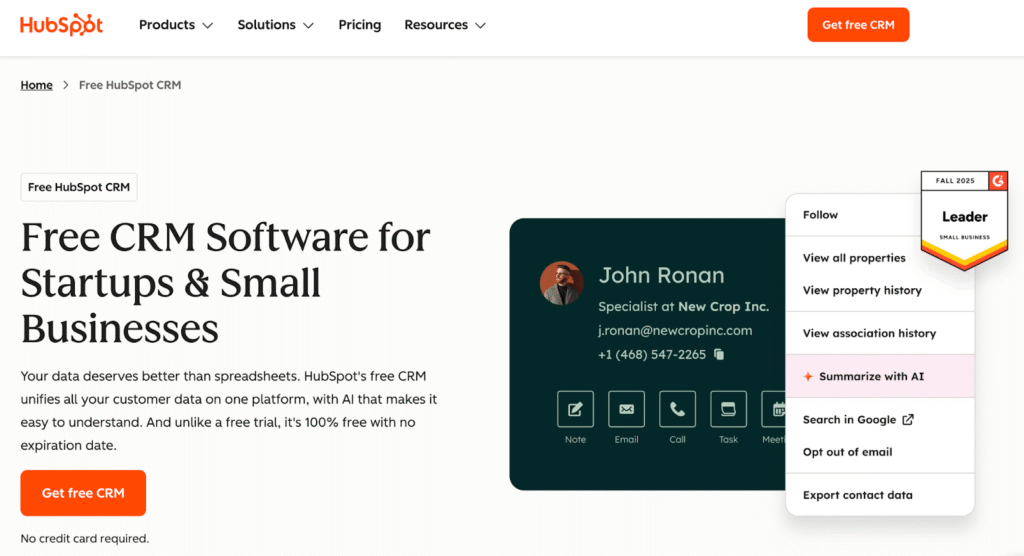
Communication & Automation
Automation isn’t about sending emails; it’s about relevance and context. Your omnichannel stack should allow your brand to communicate where, when, and how it matters most. From automated birthday messages to VIP tier notifications, it’s the invisible hand keeping engagement consistent.
SimpleLoyalty can sync with these tools to trigger behavior-based campaigns that feel intuitive rather than automated. A points alert, a redemption reminder, or a personalized upsell can all happen automatically — making loyalty a living, breathing part of the customer journey.
Other examples:
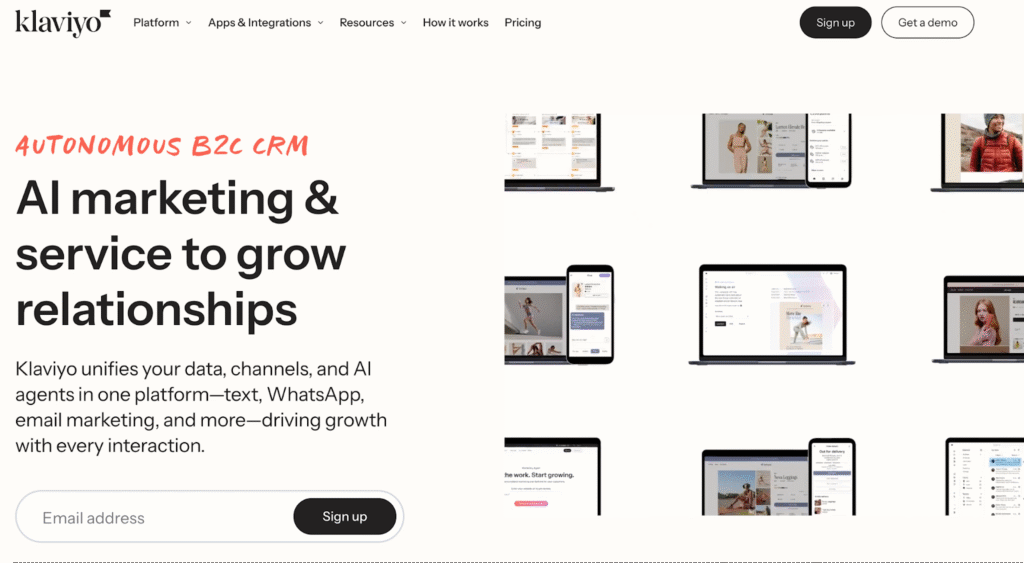
Wallet Pass Systems
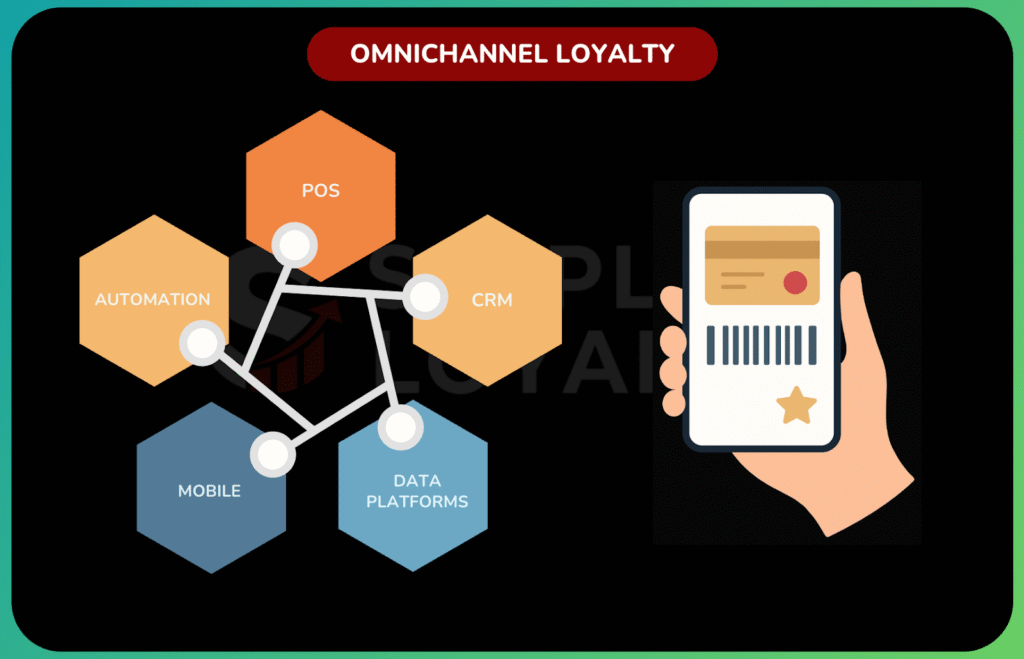
Mobile wallets are the bridge between physical convenience and digital engagement. Customers expect loyalty to work effortlessly, whether they’re scanning a QR code in-store or checking their app at home.
Other examples:
Apple Wallet, Google Wallet, Passkit

Features Your Omnichannel Loyalty Stack Must Have
This year, features aren’t just technical specs; they’re the secret weapons behind customer trust and lasting loyalty. Here’s what your omnichannel loyalty stack must deliver to turn casual buyers into loyalists:
Real-time Points Syncing
Nothing undermines loyalty faster than delayed gratification. Real-time syncing ensures customers always see accurate points and rewards. Loyalty stops being abstract. It becomes immediate and tangible.
Unified Customer Profiles Across Channels
Every purchase, click, or redemption contributes to a single customer profile. Unified profiles allow your brand to anticipate needs and treat customers like individuals rather than transactions. It’s the difference between a generic “sale” email and a message that feels hand delivered.
Omnichannel Redemption & Earning
Loyalty should follow your customer, not the other way around. Points and rewards should work online, in-store, and via mobile wallets. When loyalty works everywhere, convenience transforms into commitment, which means casual visitors become habitual buyers.
Omnichannel Loyalty Setup Examples
Small Retail Setup
Small retailers often juggle multiple channels (in-store, online, social media, and sometimes even pop-up events). A successful omnichannel loyalty setup turns all of these touchpoints into a single, coherent experience for your customers.
How it works:
- Instant points and rewards: Every transaction updates the loyalty points in real-time. No delays, no confusion.
- Unified customer profiles: Customers are recognized across all channels. Shopify + SimpleLoyalty ensures the same profile drives both marketing personalization and in-store rewards.
- Automation that feels human: Birthday emails, purchase milestones, and VIP perks are triggered automatically, keeping engagement consistent without manual effort.
- Frictionless mobile experience: PassKit integration allows customers to redeem rewards in seconds, whether they’re shopping on the street or online from their couch.
Outcome: A small retailer can compete with big brands by delivering a consistent experience that customers remember and return for. Simple, actionable, and measurable.
Multi-Location Restaurant Setup
Restaurant chains face a bigger challenge: multiple locations, varied staff, and high-volume transactions. A well-orchestrated loyalty stack ensures every customer feels like a regular, no matter where they dine.
How it works:
- Centralized loyalty data: Every purchase from every outlet feeds into a central system. Customers can earn and redeem points at any location.
- Cross-channel communication: Personalized SMS or email notifications inform guests of promotions, new menu items, or exclusive rewards.
- Consistent customer recognition: Whether dining in, ordering online, or picking up, the system identifies the customer, personalizes the experience, and tracks loyalty history.
- Scalable automation: Automatic reward tier upgrades, special offers, and reminders ensure customer engagement without manual coordination.
Outcome: Even large chains maintain frictionless loyalty experiences at scale. Using a platform like SimpleLoyalty ensures that multi-location complexity doesn’t dilute the customer experience.
Conclusion
Omnichannel loyalty isn’t just about having a points system; it’s about creating a cohesive ecosystem that touches customers wherever they engage.
In 2025, the brands that win loyalty aren’t necessarily the biggest — they’re the ones that engineers trust through technology, turning data into insights, automation into connection, and every transaction into a meaningful interaction.
Platforms like SimpleLoyalty make this effortless. They unify POS, CRM, automation, and mobile wallet functionality under one roof, letting brands focus on what really matters: delivering personalized, consistent, and rewarding experiences that keep customers coming back.
The lesson is clear: loyalty isn’t a feature. It’s a strategy. And the right tech stack is the engine that makes it work.

